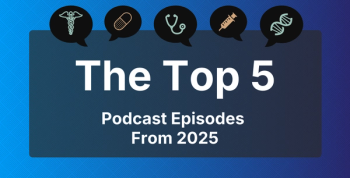
In COPD, Eosinophil Counts Identify Patients Well Suited for ICS Therapy
Patients with high eosinophil counts appeared to benefit from inhaled corticosteroid (ICS) therapy for chronic obstructive pulmonary disease (COPD), while those with low counts did not.
New research suggests eosinophil counts could be a useful biomarker to determine which patients with chronic obstructive pulmonary disease (
Guidelines for patients with COPD suggest prescribing ICS treatment in addition to bronchodilator therapy in cases where symptoms are worsening. Yet, corresponding author Helen F. Ashdown, BM, BCh, Department of Primary Care Services, University of Oxford, and colleagues, said despite reducing exacerbations in many patients, the long-term benefits of ICS treatment have yet to be elucidated. Even so, ICS use is common in patients with COPD, including among those who do not meet the criteria for such treatment, they said.
In new study results published in
They used the United Kingdom’s Clinical Practice Research Datalink database to identify patients aged 40 and older who had COPD and did not have an ICS treatment history. They found 9475 patients who met their inclusion criteria, just over half of whom (53.9%) went on to start ICS therapy and the remainder (46.1%) who used only long-acting bronchodilators. The investigators tracked patients’ time to their first exacerbation and then compared those results against blood eosinophil levels.
Overall, the authors found no significant difference in eosinophil counts between the groups (P = .71). When they looked at exacerbation risk among patients who underwent ICS treatment vs patients who were not given ICS therapy, the ICS treatment group had a higher risk of exacerbation. A total of 468 patients had an exacerbation in the first month of treatment, and 58.1% of those patients were in the ICS group.
“The median time to first exacerbation was 645 (95% CI, 615-686) days in the non-ICS group and 512 (95% CI, 483-541) days in the ICS group,” the investigators reported.
When they stratified patients by eosinophil count, those with higher counts of eosinophils had a lower risk of exacerbation vs those with low eosinophil counts. Those with eosinophil counts of at least 150 cells/mcL−1 were categorized as having “high” eosinophils, and those below 150 cells/mcL−1 were put in the “low” group.
Patients with high eosinophils had an HR for exacerbation of 1.04 (95% CI, 0.98-1.10), while those with low eosinophils had an of 1.19 (95% CI, 1.09-1.31).
Similarly, patients with low eosinophils had a greater risk of hospitalization due to pneumonia. The authors said their findings held true both when analyzed based on a patient’s most recent blood eosinophil count and when their average eosinophil counts were used.
Ashdown and colleagues said the evidence suggests ICS treatment is being overprescribed in patients with COPD. They said their findings should be used to better identify patients who will likely benefit from ICS therapy.
“In this cohort, benefit of ICS treatment was only seen in those with baseline eosinophil counts ≥ 450 cells/mcL−1 and suggests that ICS treatment should particularly be avoided in those with low eosinophil counts,” they wrote.
They added that it is not yet clear whether a single eosinophil count is sufficient to guide ICS treatment decisions, although they said their study did suggest it did not make a difference whether average counts were used or a single count.
Reference
Ashdown HF, Smith M, McFadden E, Pavord ID, Butler CC, Bafadhel M. Blood eosinophils to guide inhaled maintenance therapy in a primary care COPD population. ERJ Open Res. Published online January 2022. doi:10.1183/23120541.00606-2021
Newsletter
Stay ahead of policy, cost, and value—subscribe to AJMC for expert insights at the intersection of clinical care and health economics.








































